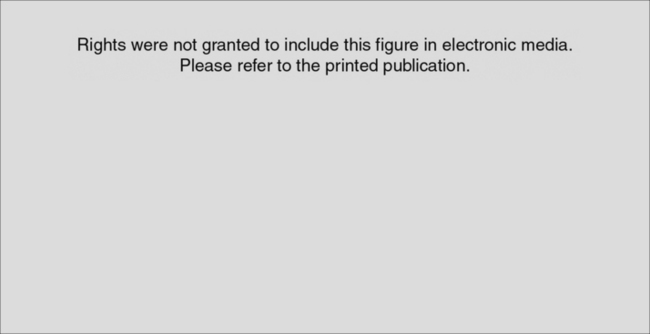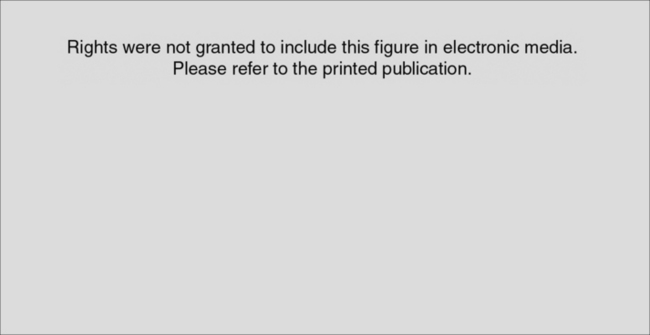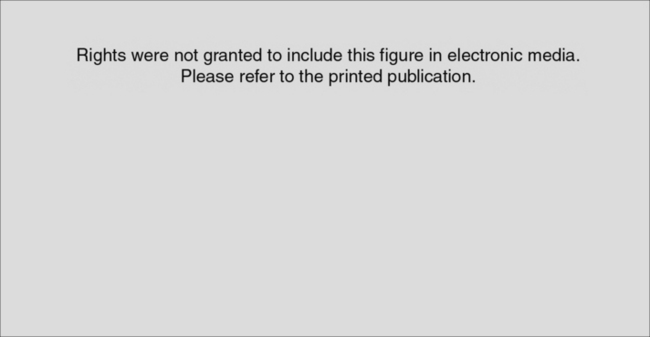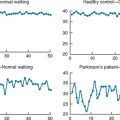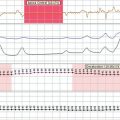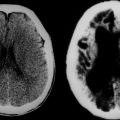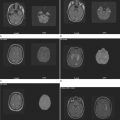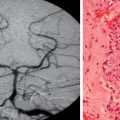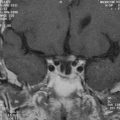CHAPTER 61 IDIOPATHIC INTRACRANIAL HYPERTENSION
Despite refinements in terminology and diagnostic criteria since it was initially described by Quincke in 1897, idiopathic intracranial hypertension (IIH) remains a disorder of uncertain pathogenesis.1 IIH most frequently affects obese women of childbearing age. It is suspected clinically in patients with headaches, transient obscurations of vision, intracranial noises, and papilledema, although the symptoms and severity of disease vary considerably. Prompt diagnosis and treatment are imperative because permanent visual field loss is common and blindness occurs in 10% of affected individuals. Medical and surgical treatments are available, although none is universally effective. The lack of evidence-based literature for IIH impedes the clinician’s ability to make well-informed choices regarding the available treatment options; prospective natural history data collection and a treatment trial are warranted.
DEFINITION
The diagnostic criteria for IIH2 are as follows:
EPIDEMIOLOGY
IIH is nine times more common in women than in men, and the incidence of IIH in adolescents and adults seems to parallel the prevalence of obesity. Studies from Iowa and Louisiana in the 1980s revealed an incidence of 0.9 per 100,000 in the general population, rising to 3.5 per 100,000 in women 15 to 44 years old and 19.3 per 100,000 in women 20 to 44 years old whose weights were 20% or more above ideal.3 Similar incidence rates were found in population studies in Libya and Israel.4,5 However, as the percentage of the obese western population continues to rise, two studies suggest that the incidence of IIH has doubled since the 1980s.6,7 IIH in children occurs with equal frequency in boys and girls before puberty, although a secondary cause is often identified in children.8–11 There is no known race predilection. Its onset rarely occurs after the age of 50 years.12
CLINICAL FEATURES
Most patients with IIH are symptomatic, although they occasionally come to medical attention when asymptomatic papilledema is discovered on a routine ophthalmological examination.13 The most common symptom of IIH is headache, occurring in more than 90% of patients.14 The headache is usually daily, retro-ocular or bifrontal, and described as pressure-like. It may have migrainous features with pulsating pain, nausea, vomiting, photophobia, and phonophobia.14 Some patients have prominent posterior head pain, neck pain, or back pain.15 Superimposed medication overuse headache is not uncommon, inasmuch as patients self-medicate their headaches, which are often incapacitating.
Visual symptoms are also common, including blurred vision, transient obscurations of vision, diplopia, and visual field loss/scotomata.14 Transient visual obscurations reflect brief episodes of optic nerve head ischemia caused by papilledema. They may be unilateral or bilateral and are described as partial or complete episodes of visual loss that last seconds to minutes. Transient visual obscurations are often precipitated by arising from a stooped position or rolling the eyes. They may occur many times during the day, and the vision is normal between events. Transient visual obscurations are not correlated with the severity of papilledema and are not predictive of visual loss. Patients often notice their enlarged physiological blind spot temporally “as if something was present to the side, but when I look, nothing is there.” Blurred vision and tunnel vision may also occur. In severe cases of IIH, visual loss may be acute and dramatic, leading to profound visual loss or blindness. Diplopia is generally binocular and horizontal, resulting from unilateral or bilateral sixth nerve palsy, a nonlocalizing sign of increased ICP.
Pulsatile tinnitus occurs in 60% of patients and is often described as “hearing my heartbeat in my head” or a whooshing sound in one or both ears.16 It is often not voluntarily mentioned by the patient and should be queried for. Other symptoms include paresthesias, ataxia, radicular pain, arthralgias, impaired concentration, depression, and anxiety.17–19
The hallmark of IIH is papilledema that may be asymmetrical and is occasionally unilateral.20,21 Because the severity of papilledema factors into the overall treatment plan, it is useful to have a standardized grading system for it. The Frisén scale describes papilledema in stages that are clinically meaningful (Table 61-1).22 Important features to identify are the obscuration of the optic disc borders, presence of a grayish peripapillary halo, the obscuration of one or more segments of major blood vessels as they cross the disc margin, and optic disc elevation/loss of the optic cup (Figs. 61-1 and 61-2). Hyperemia, vessel tortuosity, hemorrhages, exudates, cotton-wool spots, and optic nerve pallor are too variable to use for staging purposes. Severe papilledema may extend into the papillomacular bundle and macula, producing choroidal folds, macular edema, a macular star, and a central scotoma (Fig. 61-3).
There is probably much variability regarding the development of papilledema in relation to the onset of symptoms. In most patients, the papilledema probably precedes or coincides with symptom onset. However, there are patients who become symptomatic shortly before appreciable disc swelling is seen on ophthalmoscopy. Perhaps their visual changes arise from the effect of increased CSF pressure more posterior along the course of the optic nerve. Similarly, papilledema may evolve over hours or days to weeks.23,24
Cases of IIH without papilledema have been reported in the literature.25–27 This situation is possible in the acute phase before papilledema develops. The diagnosis is probably erroneous in many patients with chronic daily headaches and elevated CSF pressures, most of whom have overused medication.25 The diagnosis of IIH is best made in context with the expected constellation of symptoms and signs.
Spontaneous venous pulsations are sometimes relied on to approximate ICP, because they generally disappear with CSF pressures greater than 250 mm H2O.28 Although the presence of spontaneous venous pulsations is reassuring, their absence is not informative as an isolated feature, inasmuch as about 25% of normal individuals lack them. Spontaneous venous pulsations are best viewed through the direct ophthalmoscope by observing the veins over the optic disc.
Visual field defects are frequently present with IIH. An enlarged physiological blind spot, reflecting the swollen optic nerve head, is a nearly universal finding. Other common defects are inferonasal visual loss; generalized visual constriction; and central, arcuate, and altitudinal scotomas.29 Either automated or Goldmann perimetry is necessary to detect and quantify these defects. Central acuity is usually preserved with early papilledema; therefore, a decline in acuity early in the course of the disease is an ominous sign. This may result from optic nerve ischemia, optic nerve compression caused by papilledema, or macular edema.
The most common ocular motility disturbance is a unilateral or bilateral lateral rectus palsy producing an esotropia. Other cranial nerve palsies, skew deviation, and global ophthalmoparesis are rare.30,31 The motility disorders generally resolve when the ICP is lowered.
DIAGNOSTIC TESTING
Because the most important diagnostic consideration is a tumor, neuroimaging is mandatory for ruling out a space-occupying mass or ventriculomegaly. MRI is recommended unless there is a contraindication, the technology is unavailable, or the patient exceeds the gantry size or weight threshold. Ventricular size should be normal.32 There may be an empty sella, indicating long-standing increased ICP. An orbital MRI is not required for diagnosis but may be helpful, revealing protrusion of the optic papilla into the posterior aspect of the globe, flattening of the posterior sclerae, and dilation of the perineuronal subarachnoid space.33 The role of magnetic resonance venography in typical cases (overweight women of childbearing age) is controversial, but it is certainly recommended for ruling out venous sinus thrombosis in any atypical patient: slim patients, men, children without an apparent secondary cause, patients over age 45 years, and those not responding to therapy.34,35 Elliptic-centric–ordered three-dimensional gadolinium-enhanced MRI increases the sensitivity of magnetic resonance venography for detecting intracranial sinovenous stenosis.36
Spinal fluid examination with an opening pressure measurement is mandatory for diagnosing IIH. The CSF contents should be normal. The opening pressure, measured with the patient in the lateral decubitus position with the legs relaxed, is 250 mm H2O or greater in adults. Values between 200 and 249 mm H2O are not diagnostic.37 Many patients experience transient relief of the headache after a lumbar puncture, but some develop a low-pressure headache.
SECONDARY CAUSES
Many conditions have been associated with increased ICP (Table 61-2). The only factors demonstrated in case-control studies are weight gain and obesity.38 Other well-accepted factors include systemic retinoids (vitamin A, isotretinoin, tretinoin), tetracyclines (tetracycline, minocycline, doxycycline), levonorgestrel (Norplant), corticosteroid withdrawal, human growth hormone, cerebral venous sinus thrombosis, mastoiditis, Behçet’s disease, renal failure, and obstructive sleep apnea. It is uncertain whether the medications represent true causative agents or produce an additional insult in predisposed patients.
TABLE 61-2 Conditions Associated with Increased Intracranial Pressure
HIV, human immunodeficiency virus.
PATHOPHYSIOLOGY
Any unifying theory of IIH must explain (1) its predilection in obese women of childbearing age, (2) the lack of ventriculomegaly, and (3) the clinically identical syndrome produced by other etiologies, such as exogenous agents and venous sinus thrombosis. Although menstrual irregularities are common in women with IIH, no particular hormonal disturbance has been identified; irregular menses may be a co-association with obesity.39
The Monro-Kellie hypothesis compartmentalizes the intracranial contents into brain, blood, and CSF. ICP is normally maintained by a compliance factor arising from distension of meningeal membranes and compression of vascular volume. A resistance factor regulates CSF volume by venting CSF through the arachnoid granulations into the cerebral veins.40 Fifty percent of CSF are below the foramen magnum, and almost one half of that amount is absorbed in the spinal sac.41 Within the cranium, resistance factors are quickly exceeded, and so when CSF volume increases, compliance mechanisms fail and a small increase in volume results in a large increase in ICP.42,43
Some authors have proposed that increased cerebral venous pressure is the primary pathology in IIH, reversing the normal gradient between sinus and subarachnoid space and increasing the resistance to CSF flow across the arachnoid villi.44,45 Others have suggested that an abnormality in the cerebral microvasculature produces an elevation in cerebral blood volume, reflecting tissue swelling from increased total water content. However, increased brain water content or cerebral edema has never been proved in IIH.46 It is uncertain why the ventricles do not enlarge, but the venous system seems to be the distensible component manifesting increased pressure. Manometry has shown elevated CSF pressure in patients with IIH, and there is a reciprocal relationship between CSF pressure and pressure in the superior sagittal sinus and transverse sinus with IIH (i.e., removing CSF produces a decline in venous pressure).47 Both venous sinus thrombosis and venous sinus stenosis have been observed in patients with an IIH-like syndrome.35,48–50
Systemic (and subsequently intracranial) venous hypertension arising from abdominal obesity—that is, direct compression on the inferior vena cava by abdominal adipose tissue—has also been suggested.51,52 If this were the case, a much higher rate of IIH in general would be expected, especially among pregnant women. In fact, the incidence of IIH during pregnancy is no greater than that among age-matched control subjects.53
Hypervitaminosis A is one of the most extensively studied secondary causes of intracranial hypertension.54–59 The specific effect of toxic vitamin A level on CSF homeostasis is uncertain, but it may impair CSF outflow or produce a toxic effect on CSF absorption. Conflicting data have emerged with regard to serum retinol and retinol-binding protein levels in patients with IIH in comparison with unaffected subjects.60–62
The association of IIH with orthostatic edema, depression, and anxiety is suggestive of a possible neurotransmitter derangement.18,63 Although there is evidence in animal studies that 5-hydroxytriptamine and norepinephrine directly affect CSF production, these neurotransmitters have not been studied in humans.64–66 High levels of vasopressin, a hormone that regulates brain water content and raises ICP by increasing water transudation from cerebral capillaries in the choroid plexus epithelium and arachnoid villi, are present in the CSF of patients with IIH.67 Studies investigating serum levels of leptin, a hormone associated with obesity, showed no difference between patients with IIH and control subjects.
TREATMENT
 Detection of factors known to be associated with a poorer visual prognosis (i.e., high-grade papilledema with macular edema, venous sinus thrombosis, systemic hypertension)
Detection of factors known to be associated with a poorer visual prognosis (i.e., high-grade papilledema with macular edema, venous sinus thrombosis, systemic hypertension)Medical Treatment
Medical therapy is usually initiated when the diagnosis of IIH is made, but it is most useful when the primary problem is headache in the setting of good vision. On the basis of several retrospective studies suggesting that moderate weight loss is correlated with a reduction in papilledema, obese patients are advised to lose weight.67a,67b The only specific dietary regimen described in the literature is a modified low-calorie (400 to 1000 cal/day) rice-based diet, consisting of fruits, rice, vegetables and small amounts of meat, coupled with sodium restriction to less than 100 mg/day.68 Because many women with IIH also have orthostatic edema with retention of water or sodium, moderate limitation of salt and water intake is generally advised.63 Bariatric surgery may be considered when dietary weight loss is unsuccessful.51 In general, weight loss is considered a long-term management option and is not always successful in reducing ICP or alleviating symptoms.
Carbonic anhydrase inhibitors prevent the secretion of CSF in the choroid plexus and have a mild diuretic effect. They may also contribute to weight loss by producing nausea and altering the taste of food. Acetazolamide is most commonly used. It reduces CSF production by 6% to 50%, but the reduction does not occur until more than 99.5% of choroid plexus carbonic anhydrase is inhibited.69,70 This requires doses of approximately 4 g/day, which is more than most people can tolerate. The side effects of acetazolamide, such as paresthesias, somnolence, and depression, often limit its use. Furosemide may also lower ICP by diuresis, reducing sodium transport into the brain, and by weak carbonic anhydrase inhibition. Early experience with topiramate in IIH is promising; it is a weak carbonic anhydrase inhibitor used for migraine prophylaxis and commonly produces weight loss.71 Corticosteroids are to be avoided because they have undesirable side effects (weight gain, fluid retention) and cause rebound intracranial hypertension as they are withdrawn.
Patients with obstructive sleep apnea may experience improvement with weight loss and continuous positive airway pressure or bilevel positive airway pressure.72 If an exogenous agent that may be contributing to the condition is identified, it should be discontinued immediately if possible. However, additional treatment to lower the ICP may also be necessary.
Patients with headache and good vision are managed with preventive headache medications. Many such patients have coexisting migraines and tension-type headaches that respond to the usual medication used to treat these conditions.73 Analgesic overuse should be avoided.
Surgical Treatment
The normal ventricular size in IIH presents a challenge to neurosurgeons during ventriculoperitoneal shunt placement. There are no reliable data comparing ventriculoperitoneal with lumboperitoneal shunts in this condition, although one study suggests that stereotactic ventriculoperitoneal shunting has a lower risk of shunt failure.74 The lumboperitoneal route is generally preferred in IIH, but it has limitations, including a high incidence of acquired Chiari type I malformation and lumbar radiculopathy. Moreover, the CSF pressure transmitted to the lumboperitoneal shunt valve is much higher in the standing and seated positions than in the supine position and is very different from that in the ventriculoperitoneal system. Although they “treat the primary problem” of increased ICP, shunts have a very high failure rate; more than one half of patients ultimately require one or more revisions, often within months after their initial shunt placement.75 Other complications of shunts include low pressure, infection, obstruction, and migration of the shunt catheter.
Optic nerve sheath fenestration was first used to treat papilledema in 1872 and gained popularity for the treatment of IIH in the 1970s.75a The orbit may be entered medially or laterally, the conjunctiva is incised, one or more extraocular muscles are temporarily detached from the sclera, and the globe is rotated into view.76 Under microscopic viewing, the optic nerve sheath is fenestrated with several slits, or a window of dural tissue is removed. An efflux of CSF can generally be observed from the subarachnoid space with a successful decompression. The procedure immediately reduces pressure on the nerve by creating a filtration apparatus surrounding the orbital segment of the optic nerve. The long-term effectiveness may be related to the creation of a barrier by fibrous scar formation to protect the anterior optic nerve from the intracranial CSF pressure. The procedure is generally effective in stabilizing or improving vision and sometimes ameliorates headaches.77 A unilateral fenestration may improve vision in the contralateral eye. A repeat procedure is sometimes needed.78,79 Risks include transient or permanent visual loss, diplopia, and infection.
Venous stents have been inserted in patients with documented transverse venous sinus obstructions with both a measurable pressure gradient and raised proximal venous sinus pressure. Preliminary studies revealed that some patients improved dramatically, whereas others experienced no benefit.50,80 Further investigation into this potential emerging treatment modality is needed.
Idiopathic Intracranial Hypertension in Pregnancy
In women with a history of IIH, there is no contraindication to becoming pregnant, and there is no evidence of an increased risk to either the mother or the fetus in this circumstance.81,82 IIH may develop during pregnancy, although pregnancy is not an independent risk factor for IIH.53 IIH management during pregnancy is similar to that in a nonpregnant woman.83 Careful neuro-ophthalmological follow-up and repeated lumbar punctures are often satisfactory for monitoring during the gestational period. Acetazolamide may be used after 20 weeks of pregnancy. If vision deteriorates, corticosteroids, and optic nerve sheath fenestration or shunting may be employed. IIH arising during the peripartum period or after fetal loss raises the suspicion of venous sinus thrombosis.
PROGNOSIS
The course of IIH is variable, and few prospective data are available. Most patients sustain little or no visual loss and have a monophasic course. Most patients have some degree of persistent visual field loss as determined by quantitative perimetry; it usually does not interfere with daily activities, but 10% of patients develop blindness.84 The papilledema does not always completely resolve, possibly because of gliotic changes of the nerve fiber layer. Many patients develop persistent headaches that necessitate treatment after the ICP normalizes.73 A small subgroup experiences a rapid onset of symptoms and abrupt visual decline, so-called malignant IIH. Patients may have marked papilledema, macular edema, and ophthalmoparesis at presentation. This course necessitates aggressive management; multiple surgical procedures may be necessary and may nonetheless be unsuccessful in reversing visual loss.
1 Quincke H. Uber meningitis serosa und verewandte zustande. Deutsche Zeitschr Nervenheilkunde. 1897;9:149-168.
2 Friedman DI, Jacobson DM. Diagnostic criteria for idiopathic intracranial hypertension. Neurology. 2002;59:1492-1495.
3 Digre KB, Corbett JJ. Idiopathic intracranial hypertension (pseudotumor cerebri): a reappraisal. Neurologist. 2001;7:2-67.
4 Kesler A, Gadoth N. Epidemiology of idiopathic intracranial hypertension in Israel. J Neuroophthalmol. 2001;21:12-14.
5 Radhakrishanan K, Sridharan R, Askhok PP, et al. Pseudotumor cerebri: incidence and pattern in north-eastern Libya. Acta Neurol. 1986;25:117-124.
6 Garrett JH, Corbett JJ, Braswell R: The incidence of idiopathic intracranial hypertension in Mississippi. Presented at the annual meeting of the North American Neuro-Ophthalmology Society. Orlando, FL, 2004, p 269.
7 Jacobs DA, Corbett JJ, Balcer LJ: Annual incidence of idiopathic intracranial hypertension (IIH) in the Philadelphia area. Presented at the annual meeting of the North American Neuro-Ophthalmology Society. Orlando, FL, 2004, p 286.
8 Balcer LJ, Liu GT, Forman S, et al. Idiopathic intracranial hypertension: relation of age and obesity in children. Neurology. 1999;52:870-872.
9 Gordon K. Pediatric pseudotumor cerebri: descriptive epidemiology. Can J Neurol Sci. 1997;24:219-221.
10 Kesler A, Fattal-Valevski A. Idiopathic intracranial hypertension in the pediatric population. J Child Neurol. 2002;17:745-748.
11 Cinciripini GS, Donahue S, Borchert MS. Idiopathic intracranial hypertension in prepubertal pediatric patients: characteristics, treatment and outcome. Am J Ophthalmol. 1999;127:178-182.
12 Bandyopadhyay S, Jacobson DM. Clinical features of late life-onset pseudotumor cerebri fulfilling the Modified Dandy Criteria. J Neuroophthalmol. 2002;22:9-11.
13 Weig SG. Asymptomatic idiopathic intracranial hypertension in young children. J Child Neurol. 2002;17:239-241.
14 Wall M, George D. Idiopathic intracranial hypertension. A prospective study of 50 patients. Brain. 1991;114:155-180.
15 Giuseffi V, Wall M, Spiegel PZ, et al. Symptoms and disease associations in idiopathic intracranial hypertension (pseudotumor cerebri): a case-control study. Neurology. 1991;41:239-244.
16 Wall M, Giuseffi V, Rojas PB. Symptoms and disease associations in pseudotumor cerebri: a case-control study. Neurology. 1989;39:210.
17 Round R, Keane JR. The minor symptoms of increased intracranial pressure: 101 patients with benign intracranial hypertension. Neurology. 1988;38:1461-1464.
18 Kleinschmidt JJ, Digre KB, Hanover R. Idiopathic intracranial hypertension. Relationship to depression, anxiety, and quality of life. Neurology. 2000;54:319-324.
19 Groves MD, McCutcheon IE, Ginsberg LE, et al. Radicular pain can be a symptom of elevated intracranial pressure. Neurology. 1999;52:1093-1095.
20 Wall M, White WNII. Asymmetric papilledema in idiopathic intracranial hypertension. Prospective interocular comparison of sensory visual function. Invest Ophthalmol Vis Sci. 1998;39:132-142.
21 Huna-Baron R, Landau K, Rosenberg ML, et al. Unilateral swollen disc due to increased intracranial pressure. Neurology. 2001;56:1588-1590.
22 Frisén L. Swelling of the optic nerve head: a staging scheme. J Neurol Neurosurg Psychiatry. 1982;45:13-18.
23 Steffen H, Eifert B, Aschoff A, et al. The diagnostic value of optic disc evaluation in acute elevated intracranial pressure. Ophthalmology. 1996;103:1229-1323.
24 Pagani LF. The rapid appearance of papilledema. J Neurosurg. 1969;30:247-249.
25 Wang S-J, Silberstein SD, Patterson S, et al. Idiopathic intracranial hypertension without papilledema. A case-control study in a headache center. Neurology. 1998;51:245-249.
26 Marcelis J, Silberstein SD. Idiopathic intracranial hypertension without papilledema. Arch Neurol. 1991;48:392-399.
27 Lipton HL, Michelson PE. Pseudotumor cerebri syndrome without papilledema. JAMA. 1972;220:1591-1592.
28 Kahn EA, Cherry GR. The clinical importance of spontaneous retinal venous pulsations. Med Bull (Ann Arbor). 1950;16:305-308.
29 Wall M, Hart WMJr, Burde RM. Visual field defects in idiopathic intracranial hypertension (pseudotumor cerebri). Am J Ophthalmol. 1983;96:654-669.
30 Friedman DI, Forman S, Levi L, et al. Unusual ocular motility disturbances with increased intracranial pressure. Neurology. 1998;50:1893-1896.
31 Frohman LP, Kupersmith MJ. Reversible vertical ocular deviations associated with raised intracranial pressure. J Clin Neuroophthalmol. 1985;5:158-163.
32 Jacobson DM, Karanjia PN, Olson KA, et al. Computed tomography ventricular size has no predictive value in diagnosing pseudotumor cerebri. Neurology. 1990;40:1454-1455.
33 Brodsky MC, Vaphiades M. Magnetic resonance imaging in pseudotumor cerebri. Ophthalmology. 1998;105:1686-1693.
34 Cremer PD, Thompson EO, Johnston IH, et al. Pseudotumor cerebri and cerebral venous hypertension. Neurology. 1996;47:1602.
35 Biousse V, Ameri A, Bousser M-G. Isolated intracranial hypertension as the only sign of cerebral venous thrombosis. Neurology. 1999;53:1537-1542.
36 Farb RI, Vanek I, Scott JN, et al. Idiopathic intracranial hypertension. The prevalence and morphology of sinovenous stenosis. Neurology. 2003;60:1418-1424.
37 Corbett JJ, Mehta MP. Cerebrospinal fluid pressure in normal obese subjects and patients with pseudotumor cerebri. Neurology. 1983;33:1386-1388.
38 Ireland B, Corbett JJ. The search for causes of idiopathic intracranial hypertension. Arch Neurol. 1990;47:315-320.
39 Solberg Sørensen P, Gjerris F, Svenstrup B. Endocrine studies in patients with pseudotumor cerebri: estrogen levels in blood and cerebrospinal fluid. Arch Neurol. 1986;43:902-906.
40 Mann JD, Butler AB, Rosenthal JE, et al. Regulation of intracranial pressure in rat, dog, and man. Ann Neurol. 1978;3:156-165.
41 Sanders MD. The Bowman Lecture. Papilloedema: “The pendulum of progress.”. Eye. 1997;11:267-294.
42 Jones HC, Lopman BA. The relation between CSF pressure and ventricular dilatation in hydrocephalic HTx rats. Eur J Pediatr Surg. 1998;8(Suppl 1):55-58.
43 Löfgren J, Swetnow NN. Cranial and spinal components of the cerebrospinal fluid pressure-volume curve. Acta Neurol Scand. 1973;49:599-612.
44 Johnston I, Paterson S. Benign intracranial hypertension: II. Cerebrospinal fluid pressure and circulation. Brain. 1974;97:301-312.
45 Johnston IH, Paterson A. Benign intracranial hypertension: I. Diagnosis and prognosis. Brain. 1974;97:289-300.
46 Wall M, Dollar JD, Sadun AA, et al. Idiopathic intracranial hypertension. Lack of histological evidence for cerebral edema. Arch Neurol. 1995;52:141-145.
47 King JO, Mitchell PJ, Thomson KR, et al. Manometry combined with cervical puncture in idiopathic intracranial hypertension. Neurology. 2002;58:26-30.
48 Repka MX, Miller NR. Papilledema and dural sinus obstruction. J Clin Neuroophthalmol. 1984;4:247-250.
49 Lam BL, Schatz NJ, Glaser JS, et al. Pseudotumor cerebri from cranial venous obstruction. Ophthalmology. 1992;99:706-712.
50 Higgins JNP, Cousins C, Owler BK, et al. Idiopathic intracranial hypertension: 12 cases treated by venous sinus stenting. J Neurol Neurosurg Psychiatry. 2003;74:1662-1666.
51 Sugarman HJ, Felton WL, Salvant JB, et al. Effects of surgically induced weight loss on idiopathic intracranial hypertension in morbid obesity. Neurology. 1995;45:1655-1659.
52 Sugarman HJ, DeMaria EJ, Felton WL, et al. Increased intra-abdominal pressure and cardiac filling pressure in obesity-associated pseudotumor cerebri. Neurology. 1997;49:507-511.
53 Digre KB, Varner MV, Corbett JJ. Pseudotumor cerebri and pregnancy. Neurology. 1984;34:721-729.
54 Lombaert A, Carton H. Benign intracranial hypertension due to A-hypervitaminosis in adults and adolescents. Eur Neurol. 1976;14:340-350.
55 Feldman MH, Schlezinger NS. Benign intracranial hypertension associated with hypervitaminosis A. Arch Neurol. 1970;22:1-7.
56 Fishman R. Polar bear liver, vitamin A, aquaporins, and pseudotumor cerebri. Ann Neurol. 2002;52:531-533.
57 Baqui AH, de Francisco A, Arifeen SE, et al. Bulging fontanelle after supplementation with 25,000IU of vitamin A in infancy using immunization contacts. Acta Paediatr. 1995;84:863-866.
58 Selhorst JB, Waybright EA, Jennings S, et al. Liver lover’s headache; pseudotumor cerebri and vitamin A intoxication. JAMA. 1984;252:3364.
59 Alemeyehu W. Pseudotumor cerebri (toxic effect of the “magic bullet”). Ethiop Med. 1995;33:265-270.
60 Warner JEA, Bernstein PS, Yemelyanov A, et al. Vitamin A in the cerebrospinal fluid of patients with and without idiopathic intracranial hypertension. Ann Neurol. 2002;52:647-650.
61 Selhorst JB, Kulkanthrakorn K, Corbett JJ, et al. Retinol-binding protein in idiopathic intracranial hypertension (IIH). J Neuroophthalmol. 2000;20:250-252.
62 McDonald PN, Bok D, Ong DE. Localization of cellular retinol-binding protein and retinol-binding protein in cells comprising the blood-brain barrier of rat and human. Proc Natl Acad Sci U S A. 1990;87:4265-4269.
63 Friedman DI, Streeten DHP. Idiopathic intracranial hypertension and orthostatic edema may share a common pathogenesis. Neurology. 1998;50:1099-1104.
64 Lindvall-Axelsson M, Mather C, Nilsson C, et al. Effect of 5-hydroxytryptamine on the rate of cerebrospinal fluid production in rabbit. Exp Neurol. 1988;99:362-368.
65 Lindvall M, Edvinsson L, Owman C. Effect of sympathomimetic drugs and corresponding receptor antagonists on the rate of cerebrospinal fluid production. Exp Neurol. 1979;64:132-145.
66 Lindvall-Axelsson M, Nilsson C, Owman C, et al. Involvement of 5-HT1c receptors in the production of CSF from the choroid plexus. In: Seylaz J, MacKenzie ET, editors. Neurotransmission and Cerebrovascular Function I. Amsterdam: Elsevier; 1989:237-240.
67 Sørenson PS, Hammer M, Gjerris F. Cerebrospinal fluid vasopressin in benign intracranial hypertension. Ann Neurol. 1984;15:435-440.
67a Kupersmith MJ, Gamell L, Turbin R, et al. Effects of weight loss on the course of idiopathic intracranial hypertension in women. Neurology. 1998;50:1094-1098.
67b Johnson LN, Krohel GB, Madsen RW, et al. The role of weight loss and acetazolamide in the treatment of idiopathic intracranial hypertension (pseudotumor cerebri). Ophthalmology. 1998;105:2313-2317.
68 Newberg B. Pseudotumor cerebri treated by the rice/reduction diet. Arch Intern Med. 1974;133:802-807.
69 Liu GT, Glaser JS, Schatz N. High-dose methylprednisolone and acetazolamide for visual loss in pseudotumor cerebri. Am J Ophthalmol. 1994;118:88-96.
70 Tschirgi RD, Frost RW, Taylor JL. Inhibition of cerebrospinal fluid formation by a carbonic anhydrase inhibitor, 2-acetyl-1,3,4-thiadiazole-5-sulfonamide (Diamox). Proc Soc Exp Biol Med. 1954;87:373-376.
71 Eller P, Friedman DI: Topiramate for the treatment of idiopathic intracranial hypertension. Presented at the American Headache Society 45th Annual Scientific Meeting, Chicago, 2003.
72 Purvin VA, Kawasaki A, Yee RD. Papilledema and obstructive sleep apnea syndrome. Arch Ophthalmol. 2000;118:1626-1630.
73 Friedman DI, Rausch EA. Headache diagnoses in patients with treated idiopathic intracranial hypertension. Neurology. 2002;58:1551-1553.
74 Garton HJL. Cerebrospinal fluid diversion procedures. J Neuroophthalmol. 2004;24:146-155.
75 Eggenberger ER, Miller NR, Vitale S. Lumboperitoneal shunt for the treatment of pseudotumor cerebri. Neurology. 1996;46:1524-1530.
75a McGirt MJ, Woodworth G, Thomas G, et al. Cerebrospinal fluid shunt placement for pseudotumor cerebri-associated intractable headache: predictors of treatment response and analysis of long term outcomes. J Neurosurg. 2004;101:627-632.
76 Tse DT, Nerad JA, Andersen JW. Optic nerve sheath fenestration in pseudotumor cerebri: A lateral orbitotomy approach. Arch Ophthalmol. 1988;106:1458-1462.
77 Sergott RC, Savino PJ, Bosley TM. Modified optic nerve sheath decompression provides long-term visual improvement for pseudotumor cerebri. Arch Ophthalmol. 1988;106:1384-1390.
78 Spoor TC, Ramocki JM, Madion MP, et al. Treatment of pseudotumor cerebri by primary and secondary optic nerve sheath decompression. Am J Ophthalmol. 1991;112:177-185.
79 Spoor TC, McHenry JG. Long-term effectiveness of optic nerve sheath decompression for pseudotumor cerebri. Arch Ophthalmol. 1993;111:632-635.
80 Owler BK, Parker G, Halmagyi GM, et al. Pseudotumor cerebri syndrome: venous sinus obstruction and its treatment with stent placement. J Neurosurg. 2003;98:1045-1055.
81 Digre KB, Varner MW, Corbett JJ. Pseudotumor cerebri and pregnancy. Neurology. 1984;34:721-729.
82 Huna-Baron R, Kupersmith MJ. Idiopathic intracranial hypertension in pregnancy. J Neurol. 2002;249:1078-1081.
83 Evans RW, Friedman DI. The management of pseudotumor cerebri during pregnancy. Headache. 2000;40:496-497.
84 Corbett JJ, Savino PJ, Thompson HS, et al. Visual loss in pseudotumor cerebri. Follow-up of 57 patients from five to 41 years and a profile of 14 patients with permanent severe visual loss. Arch Neurol. 1982;39:461-474.
85 Daif A, Awada A, Al-Rajeh S, et al. Cerebral venous thrombosis in adults: a study of 40 cases from Saudi Arabia. Stroke. 1995;26:1193-1195.
86 Lam BL, Schatz NJ, Glaser JS, et al. Pseudotumor cerebri from cranial venous obstruction. Ophthalmology. 1992;99:706-712.
87 McDonnell GV, Patterson VH, McKinstry S. Cerebral venous thrombosis occurring during an ectopic pregnancy and complicated by intracranial hypertension. Br J Clin Pract. 1997;51:194-197.
88 Kikuchi M, Kudo S, Wada M, et al. Retropharyngeal rhabdomyosarcoma mimicking pseudotumor cerebri. Pediatr Neurol. 1999;21:496-499.
89 Molina JC, Martinez-Vea A, Riu S, et al. Pseudotumor cerebri: an unusual complication of brachiocephalic vein thrombosis associated with hemodialysis catheters. Am J Kidney Dis. 1998;31:E3.
90 Kollar DC, Johnston IH. Pseudotumor after arteriovenous malformation embolisation. J Neurol Neurosurg Psychiatry. 1999;67:249-252.
91 Condulis N, Germain G, Charest N, et al. Pseudotumor cerebri: a presenting manifestation of Addison’s disease. Clin Pediatr. 1997;36:711-713.
92 Bourruat F-X, Regli F. Pseudotumor cerebri as a complication of amiodarone therapy. Am J Ophthalmol. 1993;116:776-777.
93 Fort JA, Smith LD. Pseudotumor cerebri secondary to intermediate-dose cytarabine HCl. Ann Pharmacother. 1999;33:576-578.
94 Greer M. Benign intracranial hypertension. II. Following corticosteroid therapy. Neurology. 1963;13:439-441.
95 Liu GT, Kay MD, Bienfang DC, et al. Pseudotumor cerebri associated with corticosteroid withdrawal in inflammatory bowel disease. Am J Ophthalmol. 1994;117:352-357.
96 Walker AE, Adamkiewitz JJ. Pseudotumor cerebri associated with prolonged corticosteroid therapy. JAMA. 1964;188:779-784.
97 Cruz OA, Fogg SG, Roper-Hall G. Pseudotumor cerebri associated with cyclosporine use. Am J Ophthalmol. 1996;122:436.
98 Blethen SL. Complications of growth hormone therapy in children. Curr Opin Pediatr. 1995;7:466-471.
99 Grancois I, Castells I, Silberstein J, et al. Empty sella, growth hormone deficiency and pseudotumour cerebri: effect of initiation, withdrawal and resumption of growth hormone therapy. Eur J Pediatr. 1997;156:69-70.
100 Koller EA, Stadel BV, Malozowski SN. Papilledema in 15 renally compromised patients treated with growth hormone. Pediatr Nephrol. 1997;11:451-454.
101 Malozozwski S, Tanner LA, Wysowski DK, et al. Benign intracranial hypertension in children with growth hormone deficiency treated with growth hormone. J Pediatr. 1995;126:996-999.
102 Rogers AH, Rogers GL, Bremer DL, et al. Pseudotumor cerebri in children receiving recombinant human growth hormone. Ophthalmology. 1999;106:1186-1190.
103 Boot JH. Pseudotumor cerebri as a side effect of leuprorelin acetate. Ir J Med Sci. 1996;165:60.
104 Campos SP, Olitsky S. Idiopathic intracranial hypertension after L-thyroxine therapy for acquired hypothyroidism. Clin Pediatr. 1995;34:334-337.
105 Raghavan S, DiMartino-Nardi J, Saenger P, et al. Pseudotumor cerebri in an infant after L-thyroxine therapy for transient neonatal hypothyroidism. J Pediatr. 1997;130:478-480.
106 Saul RF, Hamburger HA, Selhorst JB. Pseudotumor cerebri secondary to lithium carbonate. JAMA. 1985;253:2869-2870.
107 Cohen DN. Intracranial hypertension and papilledema associated with nalidixic acid therapy. Am J Ophthalmol. 1973;76:680-682.
108 Mukherjee A, Dutta B, Lahiri M, et al. Benign intracranial hypertension after nalidixic acid overdose in infants. Lancet. 1990;335:1602.
109 Wysowski DK, Green L. Serious adverse events in Norplant users reported to the Food and Drug Administration’s Med-Watch spontaneous reporting system. Obstet Gynecol. 1995;85:538-542.
110 Alder J, Fraunfelder F, Edwards R, et al. Levonorgestrel implants and intracranial hypertension. N Engl J Med. 1995;332:1720-1721.
111 Gardner K, Cox T, Digre K. Idiopathic intracranial hypertension associated with tetracycline use in fraternal twins: case report and review. Neurology. 1995;45:6-10.
112 Giles CL, Soble AR. Intracranial hypertension and tetracycline therapy. Am J Ophthalmol. 1971;72:981-982.
113 Lee AG. Pseudotumor cerebri after treatment with tetracycline and isotretinoin for acne. Cutis. 1995;55:165-168.
114 Meacock DJ, Hewer RL. Tetracycline and benign intracranial hypertension. BMJ. 1981;282:1240.
115 Minutello JS, Dimayuga RG, Carter J. Pseudotumor cerebri, a rare adverse reaction to tetracycline therapy. J Periodontol. 1988;58:848-851.
116 Maroon JC, Mealy JJr. Benign intracranial hypertension. Sequel to tetracycline therapy in a child. JAMA. 1971;216:1479-1480.
117 Quinn AG, Singer SB, Buncic JR. Pediatric tetracycline-induced pseudotumor cerebri. J AAPOS. 1999;3:53-57.
118 Ohlrich GD, Ohlrich JG. Papilloedema in an adolescent due to tetracycline. Med J Aust. 1977;1:334-335.
119 Pierog SH, Al-Salihi FL, Cinotti D. Pseudotumor cerebri—a complication of tetracycline treatment of acne. J Adolesc Health Care. 1986;7:139-140.
120 Stuart BH, Litt IF. Tetracycline-induced intracranial hypertension in an adolescent: a complication of systemic acne therapy. J Pediatrics. 1978;92:679-680.
121 Chiu AM, Chuenkongkaew WL, Cornblath WT, et al. Minocycline treatment and pseudotumor cerebri syndrome. Am J Ophthalmol. 1998;126:116-121.
122 Moskowitz T, Leibowitz E, Ronen M, et al. Pseudotumor cerebri induced by vitamin A combined with minocycline. Ann Ophthalmol. 1993;25:306-308.
123 Donnet A, Dufour H, Graziani N, et al. Minocycline and benign intracranial hypertension. Biomed Pharmacother. 1992;46:171-172.
124 Beran RG. Pseudotumor cerebri associated with minocycline therapy for acne. Med J Aust. 1980;1:323-324.
125 Lochhead J, Elston JS. Doxycycline induced intracranial hypertension. BMJ. 2003;326:641-642.
126 Fraunfelder FW, Fraunfelder FT, Edwards R. Ocular side effects possibly associated with isotretinoin usage. Am J Ophthalmol. 2001;132:299-305.
127 Fraunfelder FW, Fraunfelder FT, Corbett JJ. Isotretinoin-associated intracranial hypertension. Ophthalmology. 2004;111:1248-1250.
128 Bigby M, Stern RS. Adverse reactions to isotretinoin. A report for the Adverse Reaction Reporting System. J Am Acad Dermatol. 1988;18:543-552.
129 Roytman M, Frumkin A, Boyn TG. Pseudotumor cerebri caused by isotretinoin. Cutis. 1988;42:399-400.
130 Lebowitz MA, Berson DS. Ocular effects of oral retinoids. J Am Acad Dermatol. 1988;19:209-211.
131 Tallman MS, Andersen JW, Schiffer CA, et al. Clinical description of 44 patients with acute promyelocytic leukemia who developed the retinoic acid syndrome. Blood. 2000;95:90-95.
132 Viraben R, Mathieu C, Fontan B. Benign intracranial hypertension during etretinate therapy for mycosis fungoides. J Am Acad Dermatol. 1985;13:515-517.
133 Bonnetblanc JM, Hugon J, Dumas M, et al. Intracranial hypertension with etretinate. Lancet. 1983;2:974.
134 Visani G, Manfroi S, Tosi P, et al. All-trans-retinoic acid and pseudotumor cerebri. Leukemia Lymphoma. 1996;23:437-442.
135 Javeed N, Shaikh J, Jayaram S. Recurrent pseudotumor cerebri in an HIV-positive patient. AIDS. 1995;9:817-819.
136 Prevett MC, Plant GT. Intracranial hypertension and HIV associated meningoradiculitis. J Neurol Neurosurg Psychiatry. 1997;62:407-409.
137 Schwartz S, Husstedt IW, Georgiadis D, et al. Benign intracranial hypertension in an HIV-infected patient: headache as the only presenting sign. AIDS. 1995;9:657-658.
138 Kan L, Sood SK, Maytal J. Pseudotumor cerebri in Lyme disease: a case report and literature review. Pediatr Neurol. 1998;18:439-441.
139 Konrad D, Kuster H, Hunzinker UA. Pseudotumor cerebri after varicella. Eur J Pediatr. 1998;157:904-906.
140 Lahat E, Leshem M, Barzilai A. Pseudotumor cerebri complicating varicella in a child. Acta Paediatr. 1998;87:1310-1311.
141 Sussman J, Leach M, Greaves M, et al. Potentially prothrombotic abnormalities of coagulation in benign intracranial hypertension. J Neurol Neurosurg Psychiatry. 1997;62:229-233.
142 Kesler A, Ellis MG, Reshef T, et al. Idiopathic intracranial hypertension and anticardiolipin antibodies. J Neurol Neurosurg Psychiatry. 2000;68:379-380.
143 Leker RR, Steiner I. Anticardiolipin antibodies are frequently present in patients with idiopathic intracranial hypertension. Arch Neurol. 1998;55:817-820.
144 Kalbian VV, Challis MT. Behçet’s disease: Report of twelve cases with three manifesting as papilledema. Am J Med. 1970;49:823-829.
145 Teh LS, O’Connor GM, O’Sullivan MM, et al. Recurrent papilloedema and early onset optic atrophy in Behçet’s syndrome. Ann Rheum Dis. 1990;49:410-411.
146 Graham EM, Al-Akshar R, Sanders MD, et al. Benign intracranial hypertension in Behçet’s syndrome. J Neuroophthalmol. 1980;1:73-76.
147 Martinez-Lage JF, Alamo L, Poza M. Raised intracranial pressure in minimal forms of cranial synostosis. Childs Nerve Syst. 1999;15:11-15.
148 Au Eong KG, Hariharan S, Chua EC, et al. Idiopathic intracranial hypertension, empty sella turcica and polycystic ovary syndromes—a case report. Singapore Med J. 1997;38:129-130.
149 Pelton RW, Lee AG, Orengo-Nania SD, et al. Bilateral optic disk edema caused by sarcoidosis mimicking pseudotumor cerebri. Am J Ophthalmol. 1999;127:229-230.
150 Wolin MJ, Brannon WL, Kay MD, et al. Disk edema in an overweight woman (clinical conference). Surv Ophthalmol. 1995;39:307-314.
151 Miller JJ, Thomas D, Lynn JL, et al. Sleep disorders: a risk factor for pseudotumor cerebri (PTC). Invest Ophthalmol Vis Sci. 2000;41:S313.
152 Green L, Vinker S, Amital H, et al. Pseudotumor cerebri in systemic lupus erythematosus. Semin Arthritis Rheum. 1995;25:103-108.
153 Horoshovski D, Amital H, Katz M, et al. Pseudotumor cerebri in SLE. Clin Rheum. 1995;14:708-710.
154 Sybert VP, Bird TD, Salk DJ. Pseudotumor cerebri and Turner syndrome. J Neurol Neurosurg Psychiatry. 1985;48:164-166.

